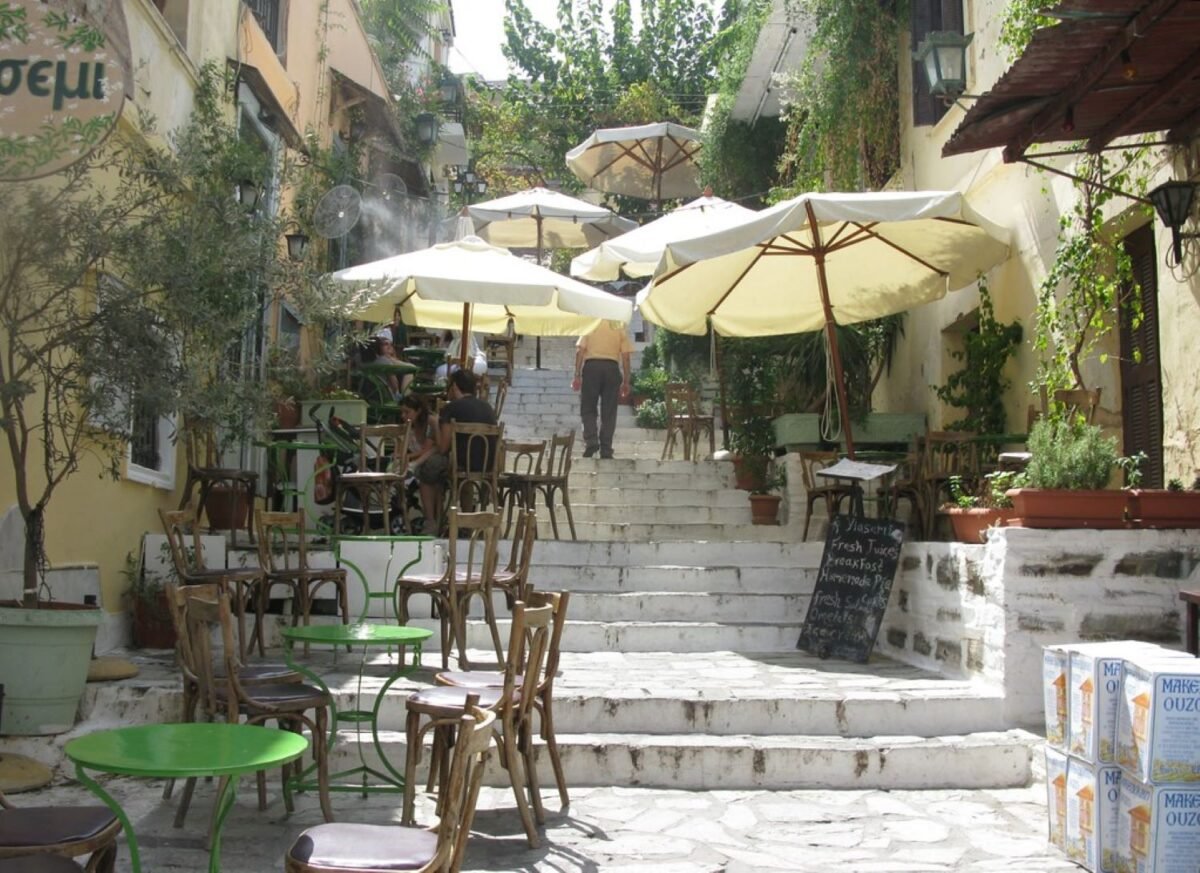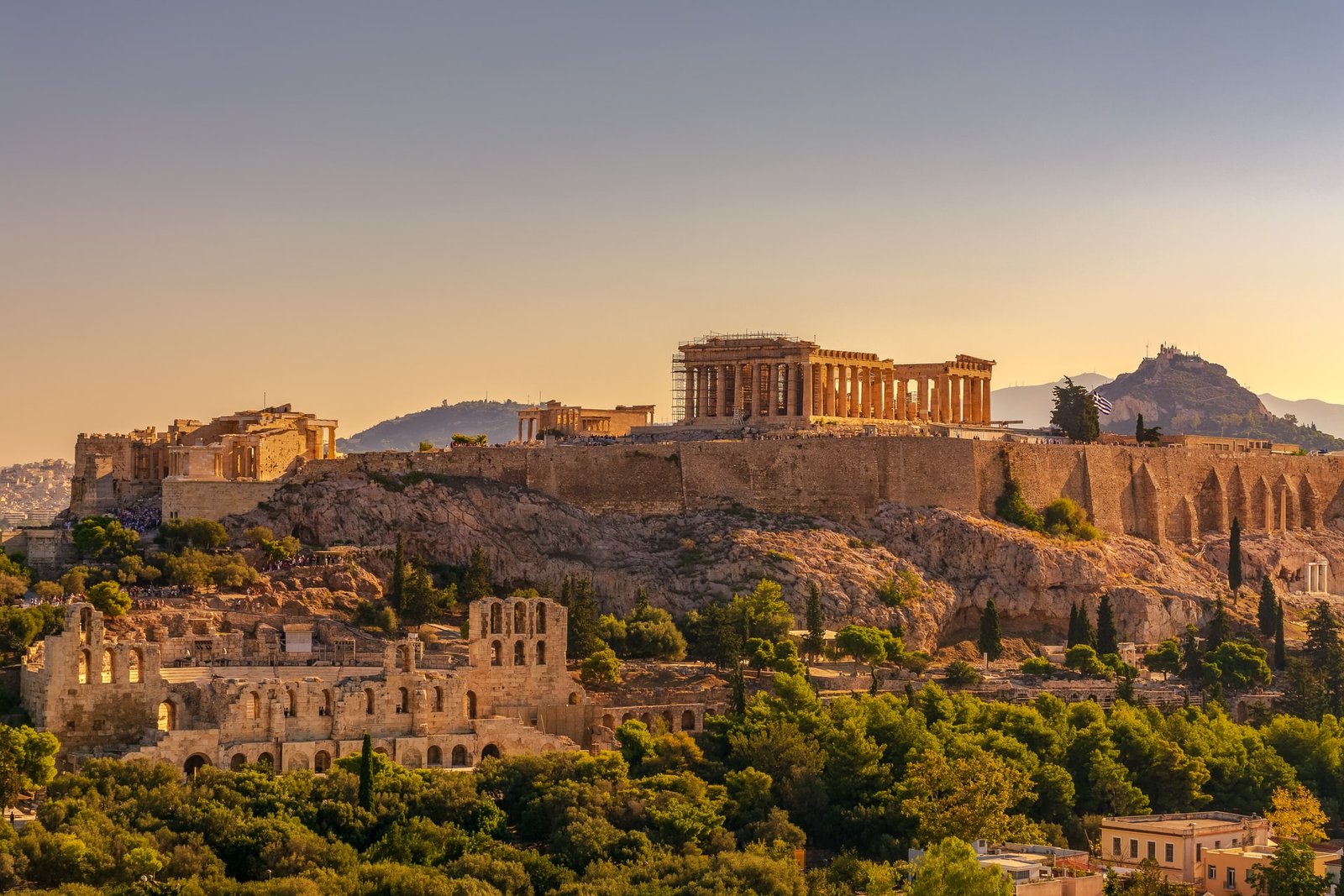When people think of Greece, they instinctively think of Athens. If you’re visiting the country, it’s worthwhile spending at least a little time in the capital. Not only is the city steeped in ancient history and culture, but it makes for an exhilarating stopover thanks to its Mediterranean climate, delicious cuisine, and diverse markets.
Two days isn’t long, but it’s enough to visit the historical highlights that Athens has to offer. The city is best known for its archaeological gems, monumental architecture, and breathtaking hilltop views. Let’s take a closer look.

Athens At A Glance
Athens attracts visitors from all over the world, thanks largely to its Greek and Roman ruins, and the fact that it’s considered the birthplace of Western civilization and democracy. Among the many historical sites worth visiting are the Acropolis, the Ancient Agora, and the Temple of Olympian Zeus.
Bear in mind that Athens has a Mediterranean climate and is known as the hottest city in mainland Europe. It is also regarded as the warmest place in Greece with an annual average temperature of almost 20 degrees Celsius. As such, always ensure that you carry high-factor sunscreen, a sun hat, sunglasses, and water. Record temperatures for June have been well over 40 degrees Celsius.
Day 1: Get up early to explore:
Rise and shine nice and early if you’re sure to make the most of your two-day trip. On the first day, we recommend visiting the main historical sites, punctuated of course by delicious cuisine and relaxation. You are on holiday, after all.
After some Greek coffee, yogurt, and honey, your first stop will be the Acropolis Museum. It’s a good idea to visit the museum before visiting the actual Acropolis since it will give you plenty of insight and context.
Acropolis Museum:
The Acropolis Museum is a must if you want to delve deeper into the history of Athens. It’s an archaeological museum that contains many of the artifacts and treasures found on the Acropolis and the surrounding foothills.

The museum opens at 8 am and tickets cost €10 (April to October). Arriving early is the best bet if you want to avoid queues and having to buy a ticket in advance. We suggest spending one to two hours there.
Acropolis:
After the museum, head over to the Acropolis itself, which is an ancient citadel situated atop a rocky outcrop above the city. Aside from being the location of many ancient architectural buildings, such as the Parthenon and the Erechtheion, it also offers breath-taking views of the city.
If you prefer, visiting the Acropolis in the evening is a great choice if you want to enjoy the sunset. It’s open until 8 pm in the summer months. We recommend spending one to two hours at the Acropolis.
Plaka neighborhood
Following the Acropolis, make your way down the hill into the Plaka neighborhood to find a place to have lunch, which shouldn’t be difficult. We recommend heading over towards Ermou Street, which is one of the main pedestrianized streets in the heart of the city.

There are plenty of cafes in this area offering traditional Greek food, including inexpensive pizza, sandwiches, Mediterranean dishes, salads and souvlaki. After lunch you may want to wander around Plaka if it’s not too hot. Alternatively, you could head back to your accommodation for a siesta.
More archaeological sites:
In the late afternoon, we recommend visiting some more essential archaeological sites, including the Temple of Olympian Zeus, the Roman Agora, Hadrian’s library, or the Panathenaic Stadium, if you have the time of course.
In the evening, what better way to wind down than with some grilled fish, ouzo, or a selection of olives and cheeses in one of the many restaurants in the Plaka district?

Day 2
A picnic at Philopappos Park:
In the morning we recommend preparing a picnic before visiting Philopappos Park, which is close to Areopagus Hill. From the monument of Philopappos, you can get an amazing view of the Acropolis, the Odeon of Herodes Atticus, and the surrounding hills.

The park itself is wooded and makes for an excellent starting point for a short hike around the area. It also offers stunning views from other points in the park, so it’s worth exploring a bit.
The National Archaeological Museum:
After lunch, we recommend The National Archaeological Museum, which is a must for history buffs. The museum was built in 1829 and contains over 11,000 exhibits, covering thousands of years of Greek culture. In the summer, entry costs €12 (€6 in the winter).
Varvakios Food Market:
If you have time, you should also visit the Varvakios food market to stock up on Greek delicacies before leaving. The market offers a vast array of local seafood, meat, spices, as well as fresh fruit and vegetables.
Psiri neighborhood :
What better way to conclude your two-day adventure than exploring the Psiri neighborhood, known for its restaurants, bars, and nightlife? This is a must if you’re keen on wine tasting and live music. Some recommendations include Lithos Tavern and the Cinque Wine & Deli bar.

Greek cuisine is varied, drawing on influences from the East and West. Typically, it includes fresh, seasonal vegetables, grilled fish and souvlaki, feta cheese, salads, Greek yogurt, herbs and spices, and of course, olive oil.
Greeks especially prize mealtimes as an opportunity to gather together as families and friends, especially at lunch. After which comes the siesta, or early afternoon nap, which typically lasts from 2 pm to 5 pm in the summer.
Siesta is an essential part of Greek culture since the heat of the day is too intense for working or doing anything other than napping and relaxing. Bear in mind that shops, cafes, and banks will be closed during siesta.
Final thoughts:
There’s so much to do and see in Athens, so it’s best to make the most of your short trip, packing in as much variety as you can. Remember, you’ll always have the siesta if the heat gets overwhelming, and you won’t be missing out since the whole city will be napping.














